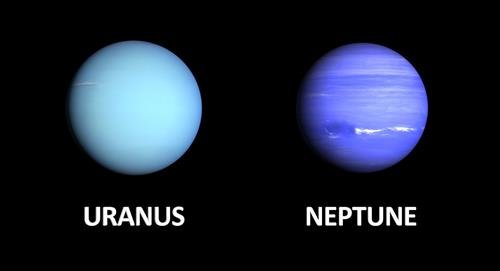Diamonds will rain on Uranus and Neptune, but no one will get rich: this is what happens and here is the scientific explanation
Conditions on both ice giants are extreme, with rising temperatures and enormous atmospheric pressure compared to Earth.

Uranus and Neptune are two ice giants of the solar system. Composed mainly of water, ammonia and methane, we don't know much about what happens in the core. We know that there is a phenomenon called "diamond rain." The term was first introduced in 1977 with the launch of the Voyager 2 mission, the only probe to visit these systems. Given the composition of these planets and the extreme conditions, both in temperature and atmospheric pressure, methane would be transformed, which explains the reduction of these crystalline structures. On the other hand, there is liquid water on the Earth's surface, which explains why what falls to Earth is water.
Methane contains carbon and, when crushed by intense atmospheric pressure, forms diamonds, which then fall like raindrops, as astrophysicist Naomi Rowe-Gurney explains in a NASA podcast: “Inside the Earth, when it's long ago heat and atmosphere. It's very cold, they fall like raindrops." These diamonds are dense, they form and accumulate, and then they get heavier. This means, in part, that they rain in the atmosphere. But what we see here is not rain, because this pressure "It's extreme. As humans, we will never be able to get there, so even if these diamonds existed, we would never be able to get them. So... unfortunately." Extreme conditions do not allow visiting Uranus and Neptune, which also creates additional difficulties in the study and discovery of their secrets.